We've found 1000 matches for your search. Order by
Results
-
 £19.95
£19.95Hallelujah Chorus (from Messiah) (Brass Band - Score and Parts)
Estimated dispatch 7-14 working days
-
 £24.95
£24.95Headless Horseman, The (Brass Band - Score and Parts)
Estimated dispatch 7-14 working days
-
 £59.95
£59.95Henry V (Brass Band - Score and Parts)
Original composition by R. Maldwyn Price
Estimated dispatch 7-14 working days
-
 £59.95
£59.95Hinemoa (Brass Band - Score and Parts)
Estimated dispatch 7-14 working days
-
 £39.95
£39.95Hms Trinidad March (Brass Band - Score and Parts)
Estimated dispatch 7-14 working days
-
 £19.95
£19.95Homeland, The (Brass Band - Score and Parts)
Estimated dispatch 7-14 working days
-
 £24.95
£24.95Huldigungsmarsch (Homage March) (Brass Band - Score and Parts)
Estimated dispatch 7-14 working days
-
 £24.95
£24.95Hungarian March (Brass Band - Score and Parts)
Estimated dispatch 7-14 working days
-
 £19.95
£19.95I Need You So (Cornet Solo with Brass Band - Score and Parts)
Estimated dispatch 7-14 working days
-
 £24.95
£24.95Ida and Dot (Cornet Duet with Brass Band - Score and Parts)
Estimated dispatch 7-14 working days
